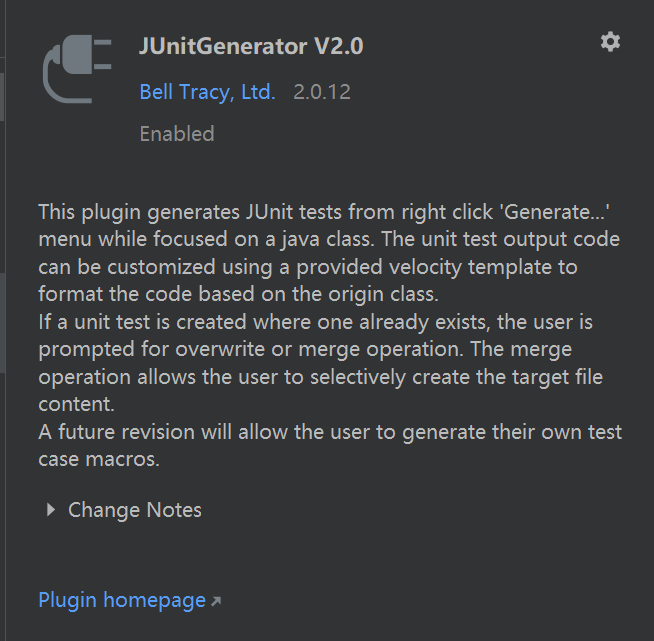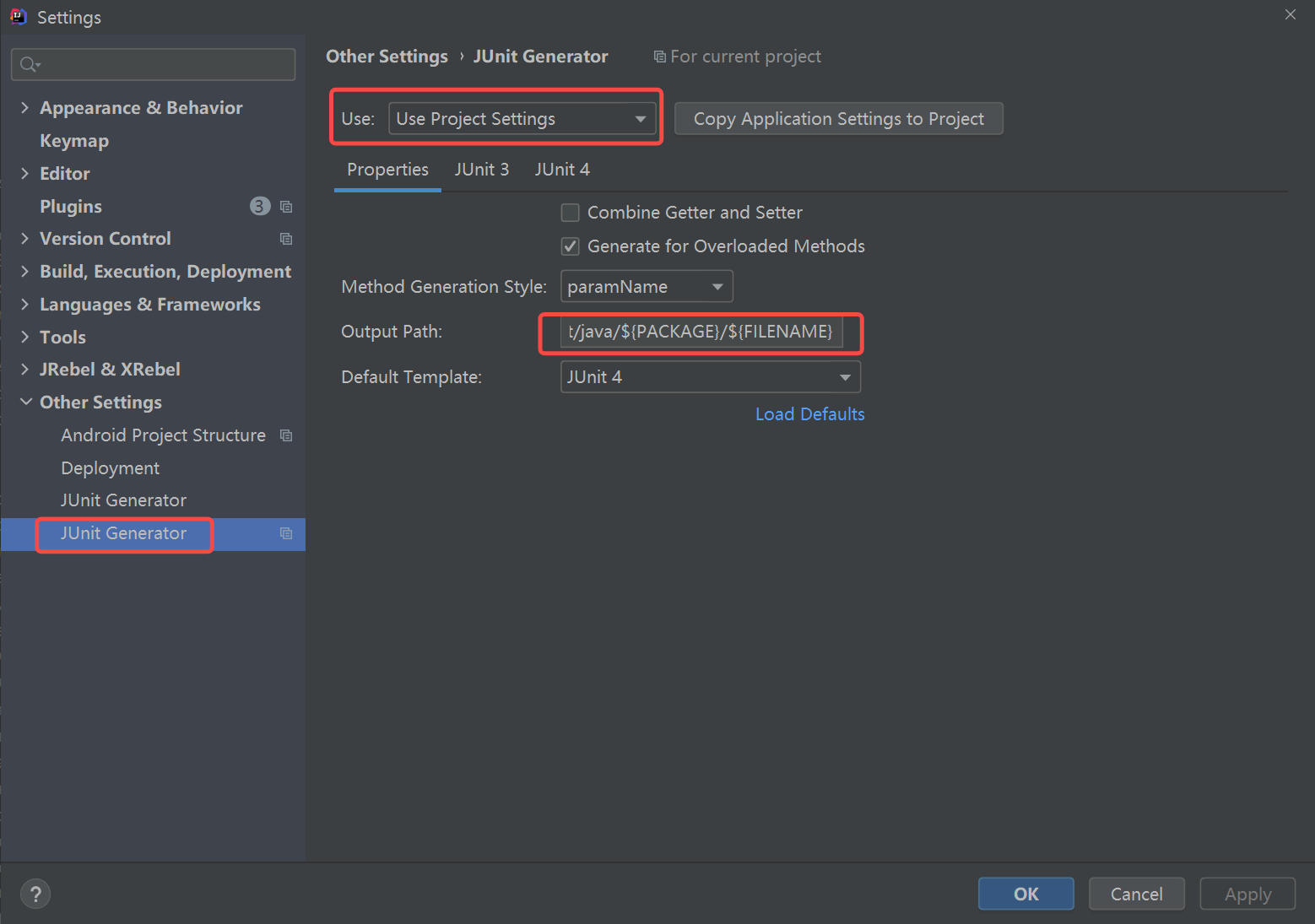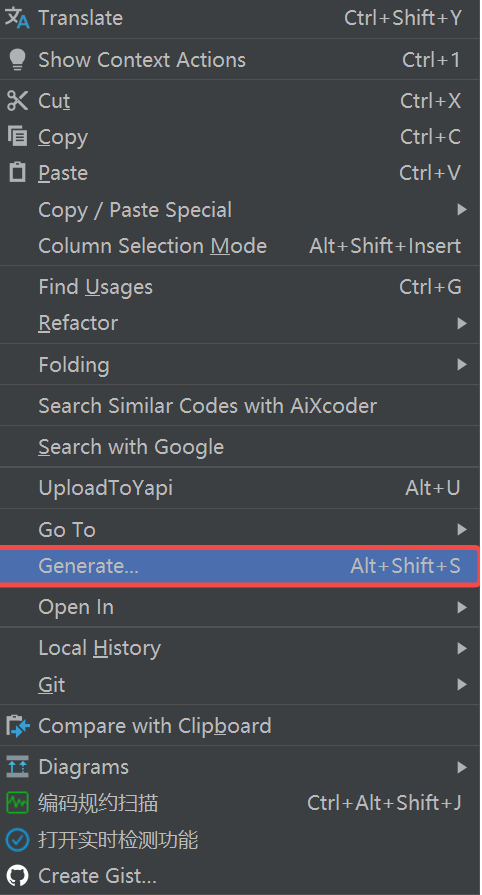JUnitGenerator安装
在Idea市场里安装JUnitGenerator插件如图,重启后生效

设置生成路径及模板
Output Path: ${SOURCEPATH}/..//../test/java/${PACKAGE}/${FILENAME}
注:根据实际项目结构调整,设置为默认模板,另需要在Project Structure–>Modules中设置Test文件目录,可改造为自启动,随容器启动,

设置Junit4 生成模板
支持 CommonResponse 或 Wrapper
1
2
3
4
5
6
7
8
9
10
11
12
13
14
15
16
17
18
19
20
21
22
23
24
25
26
27
28
29
30
31
32
33
34
35
36
37
38
39
40
41
42
43
44
45
46
47
48
49
50
51
52
53
54
55
56
57
58
59
60
61
62
63
64
65
66
67
68
69
70
71
72
73
74
75
76
77
78
79
80
81
82
83
84
85
86
87
88
89
90
91
92
93
94
95
96
97
98
99
100
101
102
103
104
105
106
107
108
109
110
111
112
113
114
115
116
117
118
| #macro (cap $strIn)$strIn.valueOf($strIn.charAt(0)).toUpperCase()$strIn.substring(1)#end
#foreach ($entry in $entryList)
#set( $testClass="${entry.className}Test")
package $entry.packageName;
import java.util.*;
import org.junit.Test;
import org.junit.Before;
import org.junit.After;
import org.springframework.http.ResponseEntity;
@SuppressWarnings("all")
public class $testClass {
public final String ipAndPort="localhost:8080/";
public final String token="login-token";
public final String extend = "extend";
private static HttpHeaders requestHeaders;
@Before
public void before() throws Exception {
requestHeaders = new HttpHeaders();
requestHeaders.add("token", token);
requestHeaders.add("", "");
JunitUtils.setRequestHeaders(requestHeaders);
}
@After
public void after() throws Exception {
}
#foreach($method in $entry.methodList)
@Test
public void test#cap(${method.name})() throws Exception {
TestEntity testEntity=JunitUtils.checkRequest(ipAndPort,token);
ResponseEntity<CommonResponse> responseResponseEntity=JunitUtils.getResponseEntity(testEntity);
JunitUtils.checkResponse(responseResponseEntity.getBody());
}
#end
#foreach($method in $entry.privateMethodList)
@Test
public void test#cap(${method.name})() throws Exception {
#foreach($string in $method.reflectionCode)
$string
#end
}
#end
}
#end
代码块1:根据ipAndPort和token 拼装基础的URL和请求头
代码块2:工具块,方便快速跳转到本方法的源头
代码块3:模式1参数封装,一般用于GET 和DELETE 请求,纯URL
代码块4:模式2参数封装,一般用于POST和PUT 请求,纯对象。支持Json字符串,如下:
UpdateUserByPKReq objectRequest = JunitUtils.jsonToObject("{\"name\":\"接口测试-勿删\",\"userNumber\":\"1573195928331\"",UpdateUserByPKReq.class);
代码块5:模式1和模式2的组合,拼装URL+对象
代码块6:适用于模式1和模式2,进行具体的请求并获得响应结果
代码块7:适用于模式3,进行具体的请求并获得响应结果
代码块8:检查响应结果,默认200000为成功,如果非200000失败。如有多个状态码均为成功,可以增加成功状态码进行入参,
如下:JunitUtils.checkResponse(responseResponseEntity.getBody(),600220)
|
这里可自行改造为
1
2
3
4
5
6
7
8
9
10
11
12
|
@RunWith(SpringJUnit4ClassRunner.class)
@SpringBootTest(classes = com.xxx.class)
@Slf4j
workspace.xml中加入
<component name="PropertiesComponent">
<property name="dynamic.classpath" value="true" />
<!-- -->
|

不知道大家有没有用有道云笔记的没有,经常性的新打开的笔记会在首行,但除了阅读之外,应该在最后一行继续编辑,所有大多情况下需要鼠标滑动到行尾,搜索过很多方法,不如Ctrl+A,然后→右箭头好用。mark





